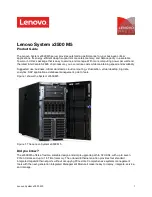
Chapter 3, Setting Administration Preferences
75
Specifying Log File Options
In the domestic version of Enterprise Server, the Stronger Ciphers option
presents a choice of 168, 128, or 56-bit secret keysize restriction, or no
restriction. In the export version, this option presents a choice of 56-bit secret
keysize or no restriction. For both versions, a filename to be served when the
restriction is not met can be specified. If no filename is specified, Enterprise
Server returns a “Forbidden” status.
If you select a restriction that is not consistent with the current cipher settings
under Security Preferences, Enterprise Server displays a popup dialog that
warns that you need to enable ciphers with larger secret keysizes.
The implementation of the keysize restriction is now based on an NSAPI
PathCheck
directive, rather than Service
fn=key-toosmall
. This directive
is:
PathCheck fn="ssl-check" [secret-keysize=<nbits>] [bong-file=<filename>]
where
<nbits>
is the minimum number of bits required in the secret key, and
<filename>
is the name of a file (not a URI) to be served if the restriction is
not met.
This function returns
REQ_NOACTION
if SSL is not enabled, or if the
secret-
keysize
parameter is not specified. If the secret keysize for the current
session is less than the specified
secret-keysize
, the function returns
REQ_ABORTED
with a status of
PROTOCOL_FORBIDDEN
if
bong-file
is not
specified, or else
REQ_PROCEED
, and the “path” variable is set to the
bong-
file
<filename>
. Also, when a keysize restriction is not met, the SSL session
cache entry for the current session is invalidated, so that a full SSL handshake
will occur the next time the same client connects to the server.
Note
The Stronger Ciphers form removes any Service
fn=key-toosmall
directives
that it finds in an object when it adds a PathCheck
fn=ssl-check
.
For more information, see “The Enforce Strong Security Requirements Page,” in
the online help.
Specifying Log File Options
Log files can help you monitor your server’s activity. You can use these logs to
monitor your server and troubleshoot problems.
Summary of Contents for Netscape Enterprise Server
Page 30: ...Contacting Technical Support 30 Netscape Enterprise Server Administrator s Guide ...
Page 32: ...32 Netscape Enterprise Server Administrator s Guide ...
Page 56: ...Sending Error Information to Netscape 56 Netscape Enterprise Server Administrator s Guide ...
Page 66: ...66 Netscape Enterprise Server Administrator s Guide ...
Page 112: ...Managing a Preferred Language List 112 Netscape Enterprise Server Administrator s Guide ...
Page 158: ...158 Netscape Enterprise Server Administrator s Guide ...
Page 182: ...Using the Watchdog uxwdog Process Unix 182 Netscape Enterprise Server Administrator s Guide ...
Page 196: ...Viewing Events Windows NT 196 Netscape Enterprise Server Administrator s Guide ...
Page 218: ...Enabling the Subagent 218 Netscape Enterprise Server Administrator s Guide ...
Page 266: ...266 Netscape Enterprise Server Administrator s Guide ...
Page 302: ...Enabling WAI Services 302 Netscape Enterprise Server Administrator s Guide ...
Page 310: ...310 Netscape Enterprise Server Administrator s Guide ...
Page 446: ...Customizing the Search Interface 446 Netscape Enterprise Server Administrator s Guide ...
Page 448: ...448 Netscape Enterprise Server Administrator s Guide ...
Page 454: ...Responses 454 Netscape Enterprise Server Administrator s Guide ...
Page 464: ...Referencing ACL Files in obj conf 464 Netscape Enterprise Server Administrator s Guide ...
Page 504: ...504 Netscape Enterprise Server Administrator s Guide ...
















































